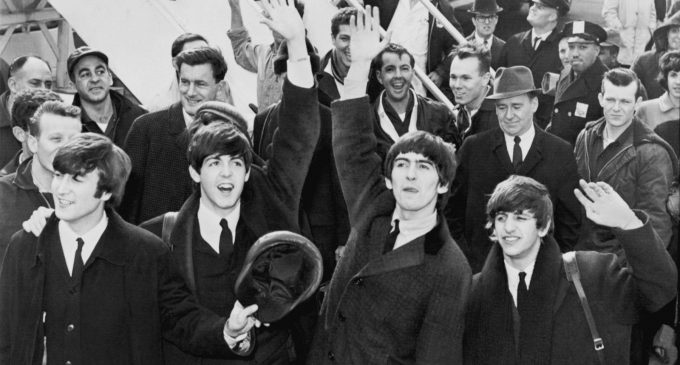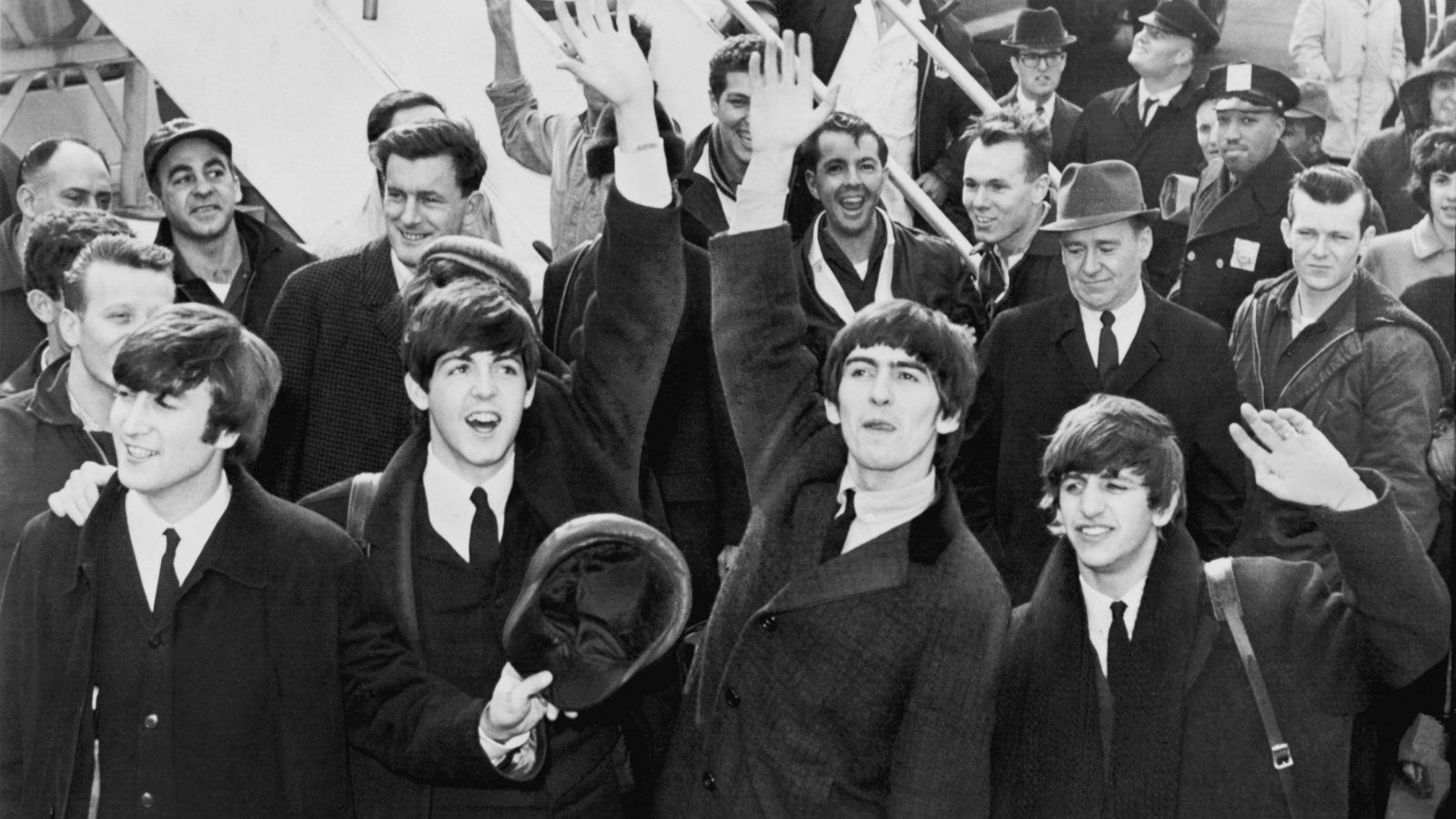The “karmic connection” between The Beatles’ George Harrison and Ravi Shankar — Quartz

There is no easy explanation for such vastly dissimilar people as George (Harrison) and Ravi Shankar instantly connecting with each other, almost as if their relationship was preordained. Their family backgrounds were completely different. The Beatle was the son of a bus conductor father and a shop assistant mother, both with modest means and even more modest educational qualifications. The sitar maestro’s father was a statesman, lawyer and scholar, and his mother the daughter of a wealthy landowner. George grew up in a working-class suburb of Liverpool.
Ravi Shankar, the scion of an erudite Bengali Brahmin family, was in Paris by the age of ten and touring cities of Europe and America as a teenager. He spoke fluently in four languages, was a voracious reader and a great aficionado of the classical arts, including theatre, opera and painting, and of art films, while the rock star had barely read a dozen books and had no clue about finer cultural pursuits. The sitarist was trained in a meticulously crafted musical style by an illustrious teacher who was carrying on a tradition that went back several centuries. The guitarist learnt his craft on his own as he went along, free from any rules or conventions, improvising sounds and words that he and the band members felt would work best with the audience. Ravi Shankar was flamboyant, articulate and constantly seeking new friends and experiences. George, in contrast, was quiet and private, wrapped up in thoughts that he struggled to express in words or song. One was a dominant alpha male who always wanted to be in the limelight, while the other preferred to hang around on the sidelines playing a supportive role. The two were separated by a chasm of differences with hardly any common meeting ground. The two were separated by a chasm of differences with hardly any common meeting ground.
Yet, within an incredibly brief period, George and Ravi Shankar drew close to each other. Hardly any time passed since their first meeting before the music maestro agreed to give the Beatle personal lessons in the sitar, a privilege for which many advanced students in India had to wait for years. The two would be in constant touch after that and, in less than three months after they met at the Angadi dinner, they had reworked their busy schedules to travel together across India for a month and a half.
Many years later, Ravi Shankar sought to explain at length this mysterious instant bond with George:
From the moment we met, George was asking questions, and I felt he was genuinely interested in Indian music and religion. He appeared to be a sweet, straightforward young man. I said I had been told he had used the sitar, although I had not heard the song ‘Norwegian Wood’. He seemed quite embarrassed, and it transpired that he had only had a few sittings with an Indian chap who was in London to see how the instrument should be held and to learn the basics of playing. ‘Norwegian Wood’ was supposedly causing so much brouhaha, but when I eventually heard the song I thought it was a strange sound that had been produced on the sitar.
At first the sitar maestro had doubts about whether a Western pop musician could cope with the far more structurally rigorous craft of Hindustani classical music. He wrote:
Then George expressed his desire to learn the sitar from me. I told him that to play sitar is like learning Western classical music on the violin or the cello. It is not merely a matter of learning how to hold the instrument and play a few strokes and chords, after which (with sufficient talent) you can prosper on your own, as is common with the guitar in western pop music.
Ravi Shankar asked George if he could devote time and energy to learn the sitar. The Beatle said he would do his best, and they arranged a date then and there. The sitar maestro went twice within a week to George’s Esher house to give him some basic instructions on how to hold the sitar properly, the correct fingering for both the hands, and some exercises.
We fixed it that he would come to India to learn in more depth. I felt strongly that there was a beautiful soul in him, and recognised one quality which I always have valued enormously and which is
considered the principal one in our culture—humility. Considering that he was so famous—part of the most popular group in the world ever!—he was nevertheless quite humble, with a childlike quality that he has retained to this day.[…]
Used to teaching students with far greater technical skill and experience with the sitar, the veteran musician realized after the first few lessons with his new pupil that it would take great patience and effort on his part to make him a proper sitarist. George was also unaware of basic etiquette in Hindustani classical music. Once he horrified his teacher by casually stepping over his sitar to answer the phone and promptly got a sharp whack on his leg for not showing enough respect for his instrument—a fundamental creed of all Indian musicians, unlike in the West.
Although he obsessively practised the sitar, while trying to follow the instructions of his idol, George must have realized the enormity of the task. This is clear from his account of his early days with Ravi Shankar, indicating that it was the latter’s powerful appeal and the spiritual connect with him that was far more fulfilling than the sitar lessons themselves.
George, in his introduction to Raga Mala, described him as a friendly person who was easy to communicate with. He said the sitarist impressed him in a way that went beyond his celebrity:
Ravi was my link into the Vedic world. Ravi plugged me into the whole of reality. I mean, I met Elvis—Elvis impressed me when I was a kid, and impressed me when I met him because of the buzz of meeting Elvis, but you couldn’t later on go round to him and say, ‘Elvis, what’s happening in the universe?’
The Beatle was overwhelmed by Shankar’s personality and dedication to his craft.
The moment we started, the feelings I got were of his patience, compassion and humility. The fact that he could do one of his five-hour concerts, but at the same time he could sit down and teach somebody from scratch the very basics: how to hold the sitar, how to sit in the correct position, how to wear the pick on your finger, how to begin playing. We did that and he started me going on the scales. And he enjoyed it, he wasn’t grudging at all, and he wasn’t flash about it either.
Ravi Shankar visited George’s home and showed him the basics of playing the sitar—how to sit properly and how to cradle the bowl of the instrument against his left foot. The Beatle was taught some elementary scales and melodies and also told that the instrument was not meant merely for entertainment. The sitar maestro taught his student that in India ragas were passed down from the ancient Vedas and had a spiritual intent, and that the patterns of sounds had the capability to elevate consciousness. George was enraptured:
I felt I wanted to walk out of my home that day and take a one-way ticket to Calcutta. I would even have left Pattie behind in that moment.
[…]
Yet, despite the almost karmic kinship George felt with Ravi Shankar and India, the musician in him must have realized the daunting task of mastering the sitar which he had set about with obsessive zeal after meeting the maestro. “The basic training period of an Indian musician is five years of eight hours’ daily practice, and a further fifteen years before a player is considered up to scratch. Harrison soon realised that the masters of Indian instruments had a complete identity with music, viewing their role as performer as a sacred task. The rigorous discipline involved in even beginning to approach an acceptable standard of expression, contrasted sharply with the casual attitude in Western pop music. George Harrison’s musical eyes had been prised open,” wrote Simon Leng in his book While My Guitar Gently Weeps.
Ravi Shankar must have realized at the very outset that his new pupil had virtually no chance of achieving a high degree of technical competence, let alone excellence, in playing the sitar in the proper Hindustani classical style. It is interesting that he chose not to discourage George from pursuing such a futile enterprise from the beginning and allowed the Beatle to give it up himself two years later.
Excerpted from Ajoy Bose’s book Across the Universe with permission from Penguin Random House. We welcome your comments at ideas.india@qz.com.
Source: The “karmic connection” between The Beatles’ George Harrison and Ravi Shankar — Quartz




There are no comments at the moment, do you want to add one?
Write a comment